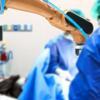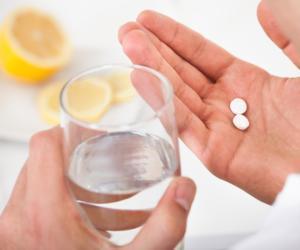All About Colectomy Prep and Recovery

For sufferers of Crohn’s disease or colitis, relief from pain and symptoms often comes from a variety of actions: a strict diet, steroids, anti-inflammatory drugs, and even natural remedies.
Over time, as the disease riddles the colon beyond the help of these methods, surgery may be the next best option. Most often, surgery is advised when parts of the colon become blocked because pieces of the bowel become hard after so many cycles of inflammation and recovery. Or, surgery may be recommended with bleeding in the gut, a hole in the bowel, a cavity of puss known as an abscess, or a fistula.
Surgical Methods: Open and Laparoscopic Colectomy
The most common type of surgery for Crohn’s and colitis performed is a colectomy, which is removal of the diseased colon. Depending on which part of the colon is infected, surgeons perform a total colectomy, partial colectomy, hemicolectomy (removal of the right or left portions of the colon, or proctocolectomy (removal of the colon and rectum).
An open colectomy is a traditional approach, where the surgeon cuts a large incision along your abdomen, pulls out your colon, and then works to trim off the diseased parts.
The more common, preferred method is a laparoscopic colectomy. In this procedure, the surgeon makes several very small incisions along your abdomen and then passes a tiny camera through one incision and surgical tools through the other. The surgeon uses the camera to track a path through your body to move the colon away from other parts of your body and then pulls the colon through a third larger incision, also in the abdomen. The surgeon then cuts and removes the diseased parts of the colon.
A laparoscopic colectomy is preferred because it reduces the time for recovery post-surgery and the pain is usually less. This is because the incisions are much smaller; larger incisions inflict more trauma to the body, increasing the time for recovery. Additionally, a larger incision exposes more of the abdomen to air, which is painful and increases the opportunity for infection. In some cases, patients need fewer pain medications after a laparoscopic colectomy as compared to a traditional open colectomy.
Additionally, because the laparoscopic option typically heals faster, patients can resume eating normal foods faster, which supplies the body with essential nutrition not provided with an IV or clear liquid diet.
While most patients are candidates for the laparoscopic option, your surgeon may opt for the traditional approach depending on your medical history. Reasons may include: a history of bleeding problems that can be better monitored with traditional surgery; pregnancy; scar tissue from previous operations in the abdomen which make it harder to navigate the intestinal region; and poor general health, such as obesity. Laparoscopic surgery takes a bit longer, so patients with an adverse reaction to prolonged anesthesia or other conditions that could be exacerbated by surgery may also not be candidates.
Keep in mind: During the laparoscopic procedure, surgeons may need to convert to an open colectomy if complications arise.
Surgical Methods: Options After Removal
After removing the diseased portions of the colon, there are three options. Your surgeon will likely know which options are possible before the surgery, but may need to adjust depending on what happens during surgery.
- Reconnecting the remaining colon: In this option, the remaining parts of the colon are stitched or stapled back together to form an anastomosis. This is the ideal option as it allows your colon to function much the same as before, with stool leaving the body through the colon.
- Ostomy bag: In this option, the surgeon connects your colon or small intestine to an opening created in your abdomen. This acts as a type of new colon, where waste travels through this passage and then deposits in a bag attached to the outside of the abdomen stoma, or opening. This may be permanent or temporary.
- Ileostomy pouch: This option is used when both the colon and rectum are removed. The surgeon uses a portion of your small intestine to create a pouch and attach it to your anus. Waste then travels through this new passage, collects in the pouch, and then leaves the anus as before.
Pre-Operation Preparation
A colectomy is a major surgery which causes trauma to your body. Careful preparation for the event can aid in a successful outcome and quicker recovery. Your doctor will likely ask you to do the following:
- Reduce or stop taking medications that thin the blood or impact the immune system, which would lower the body’s ability to recover after surgery.
- Fast 24 hours before and drink a solution that clears the bowels, providing a type of “clean slate” for the surgeon.
- Take antibiotics to suppress the bacteria found in your bowels and help prevent infection in the areas impacted by the surgery.
Post-Operation Recovery
After the operation, hospital recovery can take one to three weeks. The key sign your health team is looking for before releasing you is normal function of the colon. The most obvious sign of this is regular bowel movements, though they will also look to ensure diarrhea and excess gas are at a minimum, and you are properly hydrated. A normally functioning colon absorbs liquid; diarrhea and dehydration indicate the colon is not quite back up and running.
Pain Management
In most cases, pain is managed with a general anesthetic during surgery and a patient control analgesia (PCA) pump connected to your IV, which allows you to press a button for a shot of pain medication post-surgery.
In some cases, your surgeon may give you an epidural before surgery to help manage pain after the surgery. This is a shot into your spine which numbs the nerves and slowly releases pain medications. The effectiveness of epidurals in this type of surgery is still debated, and there is some evidence they may slow recovery.
Patients report high pain around day three after surgery because the anesthesia has worn off and you’re moving around, which strains the sore muscles in your abdomen.
Although it may seem counterintuitive given the pain, it’s important to move around as soon as possible after surgery. Start with sitting up in bed, then progress to standing, then try to sit in a chair, then slowly work your way up to walking around the hospital.
One colectomy patient recommended bringing a small pillow to the hospital to hug to your abdomen when you experience any movement, like getting up, laughing, coughing, or talking. A gentle squeeze provides a cushion to the sensitive muscles and a bit of relief. Consider also bringing other comfort items to deal with the pain, such as music and headphones, an eye mask, slippers and a robe, and entertainment.
Avoid lifting anything heavy as this may tear with incisions or cause muscle strain leading to inflammation. This advice is easier to follow in the hospital, with a team of care staff, than at home where holding small children, household chores, and daily errands are tempting activities. Just remember that providing your body time to heal properly can prolong the positive benefits of the surgery and reduce the risk of infection.
Diet and Nutrition
For two to three days after surgery, expect to take in nutrition only through an IV attached to your arm. This allows the health team to precisely control the amount of liquids you’re taking in, as well as easily administer pain killers and other drugs. A typical IV consists of water with electrolytes or sugar added.
Next, after several days of progress, you’ll be able to drink clear liquids by mouth. This includes water, broth, fruit juice without pulp, tea, black coffee, strained tomato juice, sports drinks, and plain gelatin. These liquids are easily digested and leave no residue in your intestinal tract. While hardly a tasty diet, these liquids supply your body with electrolytes, such as sodium and potassium, provide some energy, and ensure you can maintain adequate hydration.
Finally, look to transition to solid foods. You’ll start with foods that are “gut friendly” and easy to digest, such as yogurt, toast, applesauce, bananas, potatoes, boiled white rice, pasta, and oatmeal. These foods should also minimize diarrhea.
Several weeks after surgery when you’re recovering at home, you can begin to introduce more solid foods, but continue to be careful about the types of foods you consume for several months. Look for soft foods, like fish, tender meat, mild cheese, cooked vegetables, cold or warm soups, and puddings.
You may want to slowly introduce foods back into your body by eating a new food for several days and gauging the reaction before trying another new food. Additionally, try eating smaller meals every few hours, which put an easier load on your bowels and digestion process. Remember to drink plenty of water to aid the digestion process.
To give your colon the best chance for recovery, you should avoid the following for a few months after surgery: raw vegetables, dairy, high fiber foods, spicy food, hot soups or drinks, chocolate, and high fat foods like fried chicken, cakes, and sweets. Most importantly, listen to your body. If you feel sick or full, stop eating or slow down.
References
https://ibdnewstoday.com/2017/07/31/crohns-and-colon-surgery-part-3-time-for-my-procedure/
http://www.uchospitals.edu/specialties/colorectal/services/colectomy.html
http://www.bandaidcolonsurgery.com/whatis_candidates_colon_surgery.asp
http://www.webmd.com/ibd-crohns-disease/crohns-disease/features/crohns-surgery#1















